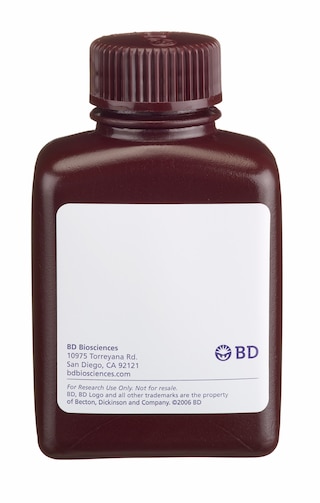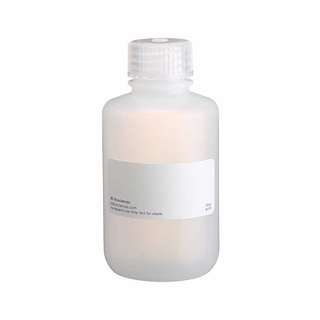-
Reagents
- Flow Cytometry Reagents
-
Western Blotting and Molecular Reagents
- Immunoassay Reagents
-
Single-Cell Multiomics Reagents
- BD® OMICS-Guard Sample Preservation Buffer
- BD® AbSeq Assay
- BD® OMICS-One Immune Profiler Protein Panel
- BD® Single-Cell Multiplexing Kit
- BD Rhapsody™ ATAC-Seq Assays
- BD Rhapsody™ Whole Transcriptome Analysis (WTA) Amplification Kit
- BD Rhapsody™ TCR/BCR Next Multiomic Assays
- BD Rhapsody™ Targeted mRNA Kits
- BD Rhapsody™ Accessory Kits
-
Functional Assays
-
Microscopy and Imaging Reagents
-
Cell Preparation and Separation Reagents
-
- BD® OMICS-Guard Sample Preservation Buffer
- BD® AbSeq Assay
- BD® OMICS-One Immune Profiler Protein Panel
- BD® Single-Cell Multiplexing Kit
- BD Rhapsody™ ATAC-Seq Assays
- BD Rhapsody™ Whole Transcriptome Analysis (WTA) Amplification Kit
- BD Rhapsody™ TCR/BCR Next Multiomic Assays
- BD Rhapsody™ Targeted mRNA Kits
- BD Rhapsody™ Accessory Kits
- United States (English)
-
Change country/language
Old Browser
This page has been recently translated and is available in French now.
Looks like you're visiting us from {countryName}.
Would you like to stay on the current country site or be switched to your country?


.png)

Analysis of PKCα in lymphocytes. Human peripheral blood mononuclear cells (PBMC) were either stimulated with 10 μM Phorbol 12-myristate 13-acetate (PMA, Sigma-Aldrich, Cat. No. P8139) for 24 hours (shaded histogram) or unstimulated (open histogram, left figure). The cells were fixed (BD Cytofix™ buffer, Cat. No. 554655) for 10 minutes, then permeabilized (BD Phosflow™ Perm Buffer III, Cat. No. 558050) on ice for at least 30 minutes, and then stained with Alexa Fluor® 488 Mouse anti-PKCα (Cat. No. 560242). Lymphocytes were selected by scatter profile. The data demonstrates that the expression of PKCα decreases when the lymphocytes are stimulated by PMA. Flow cytometry was performed on a BD FACSCalibur™ flow cytometry system. The specificity of mAb 3/PKCα was confirmed by western blot (right figure) analysis using Purified Mouse Anti-PKCα antibody (Cat. No. 610107/610108) at 0.063 μg/ml on lysates from control (lane 1) and PMA-treated (lane 2) PBMC. PKCα is identified as a band of 82 kDa, which decreases in intensity in the treated cells. Purified Mouse anti-Actin monoclonal antibody (Cat. No. 612656/612657) was the gel-loading control.
.png)

BD™ Phosflow Alexa Fluor® 488 Mouse anti-PKCα
.png)
Regulatory Status Legend
Any use of products other than the permitted use without the express written authorization of Becton, Dickinson and Company is strictly prohibited.
Preparation And Storage
Recommended Assay Procedures
Either BD Cytofix™ fixation buffer or BD Phosflow™ Fix Buffer I may be used for cell fixation. Any of the three BD Phosflow™ permeabilization buffers may be used.
Product Notices
- This reagent has been pre-diluted for use at the recommended Volume per Test. We typically use 1 × 10^6 cells in a 100-µl experimental sample (a test).
- An isotype control should be used at the same concentration as the antibody of interest.
- Source of all serum proteins is from USDA inspected abattoirs located in the United States.
- Caution: Sodium azide yields highly toxic hydrazoic acid under acidic conditions. Dilute azide compounds in running water before discarding to avoid accumulation of potentially explosive deposits in plumbing.
- Alexa Fluor® 488 fluorochrome emission is collected at the same instrument settings as for fluorescein isothiocyanate (FITC).
- For fluorochrome spectra and suitable instrument settings, please refer to our Multicolor Flow Cytometry web page at www.bdbiosciences.com/colors.
- The Alexa Fluor®, Pacific Blue™, and Cascade Blue® dye antibody conjugates in this product are sold under license from Molecular Probes, Inc. for research use only, excluding use in combination with microarrays, or as analyte specific reagents. The Alexa Fluor® dyes (except for Alexa Fluor® 430), Pacific Blue™ dye, and Cascade Blue® dye are covered by pending and issued patents.
- Alexa Fluor® is a registered trademark of Molecular Probes, Inc., Eugene, OR.
- Species cross-reactivity detected in product development may not have been confirmed on every format and/or application.
- Please refer to www.bdbiosciences.com/us/s/resources for technical protocols.
Companion Products






The Protein Kinase C (PKC) family of homologous serine/threonine protein kinases is involved in a number of processes, such as growth, differentiation, and cytokine secretion. At least eleven isozymes have been described. These proteins are products of multiple genes and alternative splicing. Conventional PKC (cPKC) subfamily members (α, β, and γ isoforms) consists of a single polypeptide chain containing four conserved regions (C) and five variable regions (V). The N-terminal half containing C1, C2, V1, and V2 constitutes the regulatory domain and interacts with the PKC activators Ca2+, phospholipid, diacylglycerol, or phorbol ester. However, the the C2-like domains of novel PKC (nPKC) subfamily members (δ, ε, η, and θ isoforms) are Ca2+-independent. The atypical PKC (aPKC) subfamily members (ζ, ι, and λ isoforms) lack the C2 domain and are unique in that their activity is independent of diacylglycerols and phorbol esters. They also lack one repeat of the cysteine-rich sequences that are conserved in cPKC and nPKC members. The C-terminal region of PKC contains the catalytic domain. The PKC pathway represents a major signal transduction system that is activated following ligand-stimulation of transmembrane receptors by hormones, neurotransmitters, and growth factors. PKCα regulates a wide variety of functions such as cellular growth, apoptosis, cardiomyocyte function, and brain cognitive functions.
The 3/PKCα monoclonal antibody recognizes PKCα, regardless of phosphorylation status, and has been reported to crossreact with PKCβ.
Development References (6)
-
Bivona TG, Quatela SE, Bodemann BO, et al. PKC regulates a farnesyl-electrostatic switch on K-Ras that promotes its association with Bcl-Xl on mitochondria and induces apoptosis . Mol Cell. 2006; 21(4):481-493. (Biology). View Reference
-
Braz JC, Gregory K, Pathak A, et al. PKC-α regulates cardiac contractility and propensity toward heart failure. Nat Med. 2004; 10:248-254. (Biology). View Reference
-
Nishizuka Y. The molecular heterogeneity of protein kinase C and its implications for cellular regulation. Nature. 1988; 334(6184):661-665. (Biology). View Reference
-
Parker PJ, Murray-Rust J. PKC at a glance. J Cell Sci. 2004; 117:131-132. (Biology). View Reference
-
Zhang XA, Bontrager AL, Hemler ME.. Transmembrane-4 superfamily proteins associate with activated protein kinase C (PKC) and link PKC to specific beta(1) integrins. J Biol Chem. 2001; 276(27):25005-25013. (Clone-specific: Immunofluorescence, Immunoprecipitation, Western blot). View Reference
-
de Quervain D J-F, Papassotiropoulos A. Identification of a genetic cluster influencing memory performance and hippocampal activity in humans. Proc Natl Acad Sci U S A. 2006; 103(11):4270-4274. (Biology). View Reference
Please refer to Support Documents for Quality Certificates
Global - Refer to manufacturer's instructions for use and related User Manuals and Technical data sheets before using this products as described
Comparisons, where applicable, are made against older BD Technology, manual methods or are general performance claims. Comparisons are not made against non-BD technologies, unless otherwise noted.
For Research Use Only. Not for use in diagnostic or therapeutic procedures.